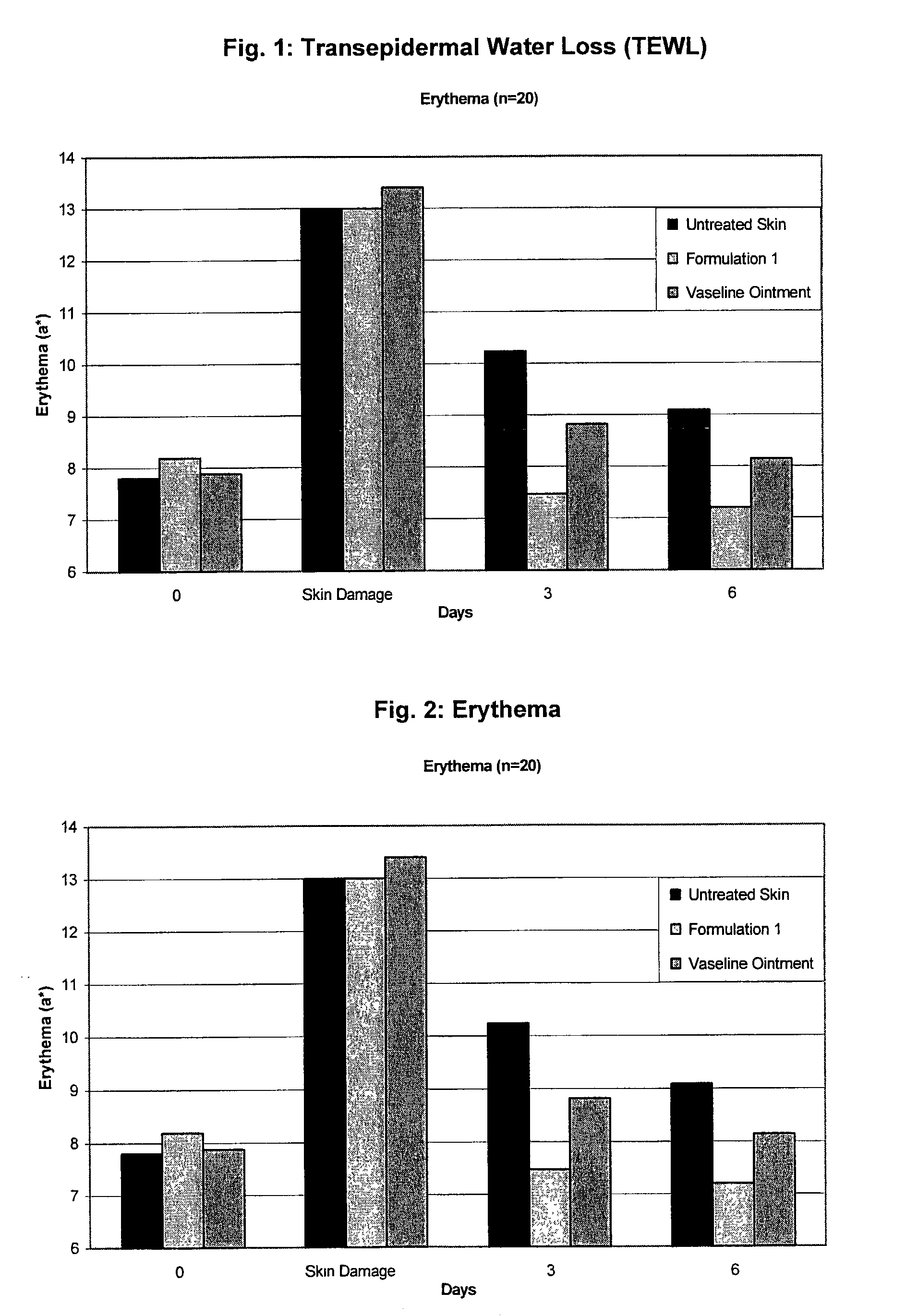Methods for treatment of human skin damaged by laser treatment or chemical peelings and compositions useful in such methods
- Summary
- Abstract
- Description
- Claims
- Application Information
AI Technical Summary
Benefits of technology
Problems solved by technology
Method used
Image
Examples
Embodiment Construction
[0037] Formulation 1: Skin Care Product for Use After Laser Treatments
1 Vegetable Oil 13.00% Butyrospermum Parkii 10.00% Pentylene Glycol 6.80% Squalane 2.50% Hydrogenated Lecithin 2.30% Glycerin 1.00% Palm Glycerides 1.00% Alcohol 0.80% Tocopheryl Acetate 0.30% Propylene Glycol 0.30% Caprylic / Capric Triglyceride 0.20% Sodium Carboxymethyl Betaglucan 0.10% Ubiquinone 0.08% Acrylates / C10-30 Alkyl Acrylate Crosspolymer 0.10% Xanthan Gum 0.05% Lecithin 0.04% Sodium Hydroxide 0.01% Ceramide 3 0.04% Aqua ad 100%
[0038] Formulation 2: Skin Care Product for Use After Chemical Peelings
2 Vegetable Oil 13.50% Decyl Oleate 10.00% Pentylene Glycol 6.25% Glycerin 2.00% Aloe Barbadensis 5.75% Hydrogenated Lecithin 1.63% Butyrospermum Parkii 0.75% Squalane 0.25% Alcohol 0.20% Xanthan Gum 0.20% Propylene Glycol 0.10% Carbomer 0.04% Sodium Carboxymethyl Betaglucan 0.03% Sodium Hydroxide 0.03% Ceramide 3 0.03% Aqua ad 100%
[0039] Formulation 3: Day Cream
3 Caprylic / Capric Triglyceride 10.00% Vegetable O...
PUM
| Property | Measurement | Unit |
|---|---|---|
| Percent by mass | aaaaa | aaaaa |
| Weight | aaaaa | aaaaa |
Abstract
Description
Claims
Application Information
 Login to View More
Login to View More - R&D
- Intellectual Property
- Life Sciences
- Materials
- Tech Scout
- Unparalleled Data Quality
- Higher Quality Content
- 60% Fewer Hallucinations
Browse by: Latest US Patents, China's latest patents, Technical Efficacy Thesaurus, Application Domain, Technology Topic, Popular Technical Reports.
© 2025 PatSnap. All rights reserved.Legal|Privacy policy|Modern Slavery Act Transparency Statement|Sitemap|About US| Contact US: help@patsnap.com

